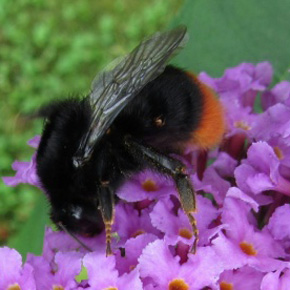The Red Tailed Bumblebee
This is Candida’s thing – she is in the process of creating a wildflower meadow in a five acre field – it is only two years old and is really a 10 year project
Supported by the Herefordshire Wildlife Trust Candida has been off on some much needed Field Courses – one of which was the UK bumblebee identification course. Now armed with an insect net she is taking part in the Bee Walk – a national survey to monitor the abundance of bumblebees across the UK. Bumblebees are in trouble their numbers are declining across the country and we have already lost two species
Bumblebees are incredibly important pollinators and as with many other flying and non flying insects are a great indicator of the bio diversification of an area – hence why we are now trying to learn the seven most common types of bumblebees found in UK
The first is the Red Tailed Bumblebee – Bombus Lapidarius
The Queen is pretty huge – mainly black with a smart orangery red bottom. The male is much smaller with yellow facial hair! and yellow bands at the thorax. Red tailed bumblebees are quite well dispersed over the UK and are social bees rather than solitary bees (which means they create a colony) The young Queen first appears in the Spring after hibernating through the Winter. After hibernation she is close to starvation and that is why it is so vital to have early pollinating flowers in our gardens and fields to feed her much needed nectar. She has to hurry and find a burrow, or a cavity under a stone to nest and make a colony. At the moment in Candida’s meadow there is an abundance of Ragged Robin, Oxeye Daisy, Sorrel, Bird’s Foot Trefoil, Meadow Buttercup and Ribwort Plantain growing as early pollinators
